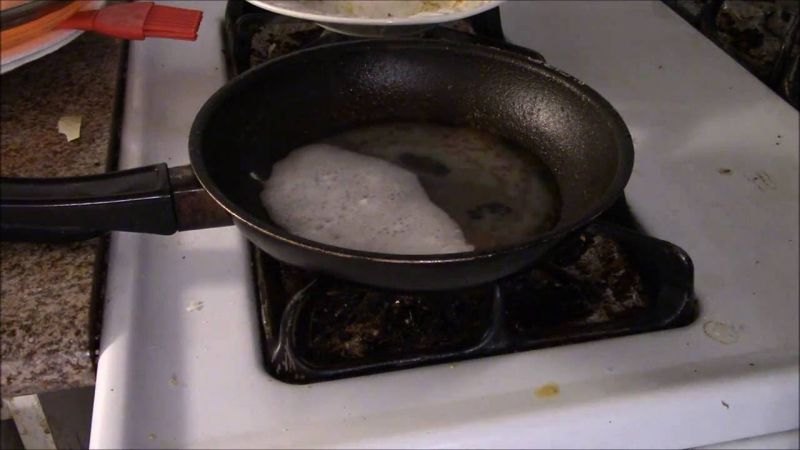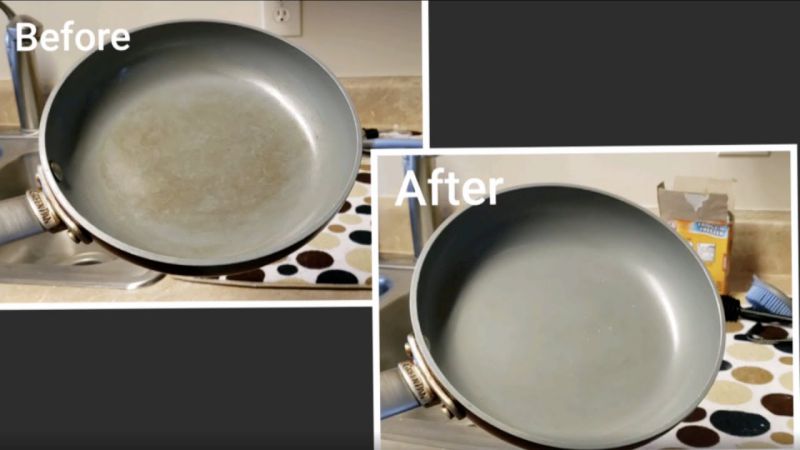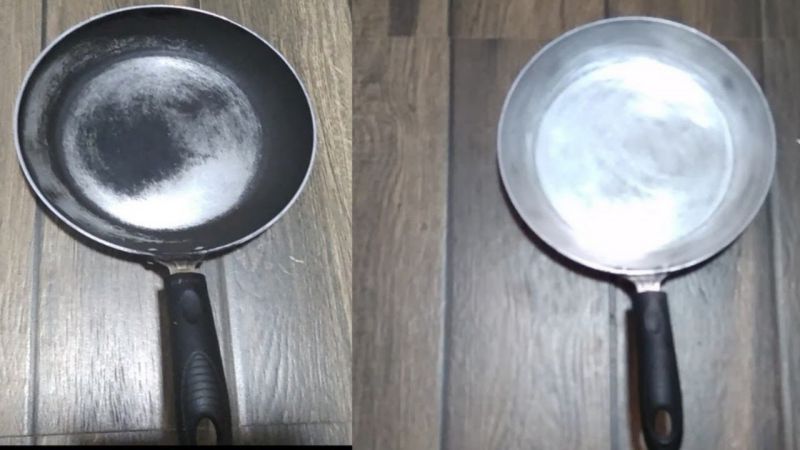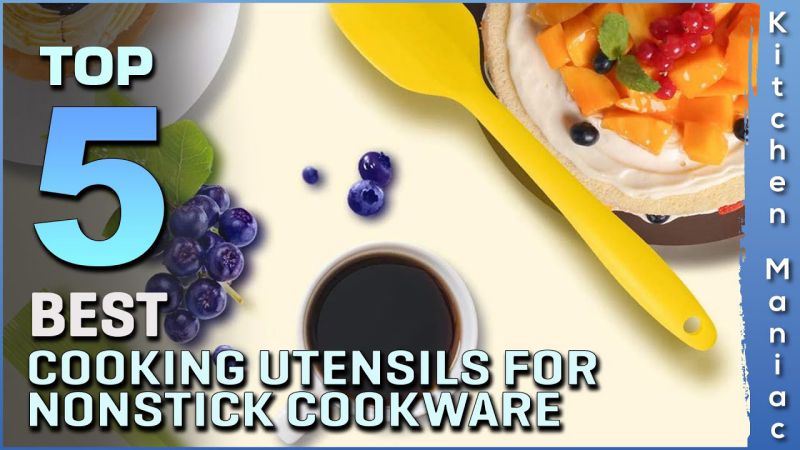In this article, I will completely guide you on How To Clean Baked On Grease From Non Stick Pans which is very helpful for you.
It is not so easy to clean baked-on grease from a non-stick pan, but not as difficult as you think. The non-stick pans made from materials such as titanium, ceramic, and Teflon, offer numerous advantages compared to traditional metal pans.
One of the most significant perks is healthier cooking, as you don’t need to use extra oils or fats when cooking with a non-stick pan. Additionally, the non-stick surface makes cleaning a snap as food won’t stick to the pan. For delicate dishes, such as omelets, a non-stick pan is ideal as it prevents food from falling apart.
Many non-stick pans are also dishwasher-friendly, making cleaning up a breeze. So, you can use a non-stick pan for a variety of cooking tasks, from sautéing vegetables to frying eggs or searing steaks. With proper care and maintenance, a non-stick pan will last for years, making it a smart investment for your kitchen.
Table of Contents
How To Clean Baked On Grease From Non Stick Pans?
You can easily clean baked-on grease from your special utensils like non-stick pans. But you need to take care during cooking and washing. But if you are stuck in the cleaning baked-on grease from your non-stick pan, don’t worry. Because you can use amazing tips and techniques to wash your non-stick pans.
You have many ways to clean your pans such as; you can use warm water and dish soap or a specialized cleaning solution. Then you can easily grab a gentle scrubber, like a sponge or brush, etc. If there are some particularly stubborn spots, try adding baking soda or vinegar to the cleaning solution for added cleaning power.
5 Amazing Tips On How To Clean Baked On Grease From Non Stick Pans?
Cleaning baked-on grease from non-stick pans can be a hassle. But if you have these amazing tips, you can keep your pans looking as good as new. These are as follows:
Boiling Water Method
To effectively remove grease from a pan, fill it with enough water to submerge the greasy area and heat it on the stove until boiling. The high temperature will assist in dissolving the grease, making cleaning easier.
Baking Soda And Vinegar Solution
By combining baking soda and vinegar, you can create a gentle and effective cleaning solution that removes stubborn food residue, grease, and stains from your pans. To use this method, simply sprinkle baking soda on the surface, add a small amount of vinegar, and use a soft sponge to scrub the pan.
The cleaning process should take less than 5 minutes and it’s important to rinse the pan thoroughly with water afterward. This solution not only protects your non-stick pans, but it’s also eco-friendly as it eliminates the need for harsh chemical cleaners.
Salt And Oil
Sprinkle salt on the greasy area, then drizzle with a small amount of oil. You can use warm water and a sponge or small piece of cloth to scrub your non-stick pan. The abrasiveness of salt and the lubricating properties of oil help break down and remove grease.
Dish Soap And Baking Soda
First, you have to mix the dish soap and baking soda in one bowl. Take a small amount of both products to create a cleaning solution. Then you can squirt dish soap on the greasy area, then sprinkle it with baking soda.
Hence, you can use a cloth or soft sponge to scrub your pan and then rinse with warm water. The abrasiveness of baking soda and the cleaning power of dish soap effectively remove baked-on grease.
Boiling Vinegar
To start, fill a pan with a small amount of vinegar that can completely cover the greased area. Next, you have to place the pan on the stove and heat the vinegar until it reaches a boiling temperature. It’s important to keep the vinegar boiling for at least 5 minutes.
By using these simple and effective tips, you can keep your non-stick pans looking like new. Whether it’s boiling water, baking soda and vinegar, salt and oil, dish soap and baking soda, or boiling vinegar, you’ll be able to remove baked-on grease in no time. So, say goodbye to the hassle of cleaning and enjoy your newly refreshed non-stick pans.
Related Posts:
- What Utensils To Use On Nonstick Pans For Oven, Frying / Cooking
- When To Throw Away Non Stick Pans / Cookware?
- How To Fix Scratched Non Stick Pan
Why Should I Take Care Of My Non-Stick Pan
Taking care of your non-stick pan is an important aspect of being a responsible cook. A non-stick pan is a valuable investment, so it’s essential to ensure its longevity and performance by following proper care methods. Neglecting proper care can result in several problems, including:
- Unevenly cooked food
- Released harmful substances into your food
- Deterioration of the pan
- Loss of its non-stick properties
Perfectly Cooked Food
Taking care of your non-stick pan ensures that it continues to perform well, providing you with evenly cooked food every time you use it. No more burnt or undercooked food.
Food Safety
By taking care of your non-stick pan, you can prevent harmful substances from leaching into your food, ensuring that it is safe for consumption.
Ease Of Use
Proper care helps to preserve the non-stick properties of the pan, making it easier to cook with and easier to clean.
How You Can Take Properly Care Of Your Non-Stick Pan?
If you want to take proper care of your non-stick pans, then you have some special techniques. These are as follows:
Avoid Using Metal Utensils
Utilizing metal utensils on a non-stick pan can harm its non-stick coating and affect its performance. Use silicone, wooden, or nylon utensils instead.
Cook On Low To Medium Heat
High heat can cause the non-stick coating to break down over time. To keep your pan in good condition, cook on low to medium heat.
Hand-Wash With Mild Soap And Water
To ensure the longevity of your non-stick pan’s surface, it’s advisable to wash it by hand using mild soap and warm water. To prevent any damage, it’s essential to steer clear of using abrasive materials like steel wool or rough sponges which can compromise the non-stick surface.
Store Properly
Store your non-stick pan in a dry place, away from dampness or moisture. By taking the time to properly care for your non-stick pan, you can enjoy its benefits for years to come.
Whether you’re a professional chef or a home cook, a well-cared-for non-stick pan will make cooking easier, safer, and more enjoyable. So, treat your non-stick pan with the care and respect it deserves, and you’ll be rewarded with delicious meals for years to come!
Conclusion
Removing stubborn baked-on grease from non-stick pans can be a frustrating experience, but it’s not impossible.
With a little know-how and the right tools, you can bring your pans back to their former glory. The baking soda and salt work as abrasives to scour away the grease, while the vinegar acts as a degreaser.
To keep your pans in good shape and maintain their non-stick properties, it’s important to avoid using metal utensils or harsh sponges that can cause scratches on the surface.
With a little care and effort, you can get rid of baked-on grease and keep your non-stick pans looking and performing like new. So don’t be intimidated by greasy pans – take control and enjoy sparkling clean cookware once again.



